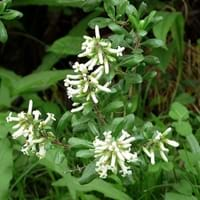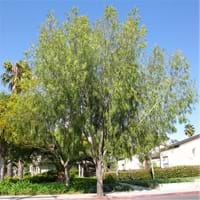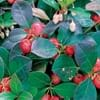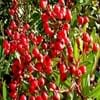Life Span
Perennial
Perennial
Type
Broadleaf Evergreen
Broadleaf Evergreen
Origin
Hybrid origin
Australia
Types
Not available
Not Available
Habitat
Mountain Slopes
Sunny Edge, Woodland Garden Secondary
USDA Hardiness Zone
7-9
9-11
AHS Heat Zone
Not Available
Not Available
Habit
Upright/Erect
Oval or Rounded
Flower Color
White, Pink
White, Ivory
Flower Color Modifier
Bicolor
Bicolor
Fruit Color
Not Available
Not Available
Leaf Color in Spring
Dark Green
Green, Dark Green
Leaf Color in Summer
Dark Green
Green, Dark Green
Leaf Color in Fall
Dark Green
Green, Dark Green
Leaf Color in Winter
Dark Green
Green, Dark Green
Leaf Shape
Irregular
Linear to lanceolate
Plant Season
Spring, Summer, Fall, Winter
Spring, Summer, Fall, Winter
Sunlight
Full Sun, Partial Sun
Full Sun
Type of Soil
Loam, Sand
Loam, Sand
The pH of Soil
Acidic, Neutral, Alkaline
Acidic, Neutral, Alkaline
Soil Drainage
Well drained
Well drained
Bloom Time
Summer
Early Spring, Fall, Late Winter
Tolerances
Drought
Pollution, Drought
Where to Plant?
Ground
Ground
How to Plant?
Seedlings
Cuttings, Seedlings
Plant Maintenance
Medium
Medium
Watering Requirements
Average Water Needs
Water regularly for 2 months
In Summer
Lots of watering
Lots of watering
In Spring
Moderate
Moderate
In Winter
Average Water
Average Water
Soil pH
Acidic, Neutral, Alkaline
Acidic, Neutral, Alkaline
Soil Type
Loam, Sand
Loam, Sand
Soil Drainage Capacity
Well drained
Well drained
Sun Exposure
Full Sun, Partial Sun
Full Sun
Pruning
Remove damaged leaves, Remove dead branches, Remove dead flowers, Remove dead leaves
Pruning may be required for height clearance
Fertilizers
All-Purpose Liquid Fertilizer
Does not require fertilizer once established
Pests and Diseases
Fungal leaf spots
Free of serious pests and diseases
Plant Tolerance
Drought
Drought
Flowers
Showy
Insignificant
Flower Petal Number
Single
Not Available
Foliage Texture
Medium
Fine
Foliage Sheen
Glossy
Glossy
Attracts
Bees, Birds, Butterflies
Blowflies, Insects
Allergy
Not Available
Mild Allergen
Aesthetic Uses
Beautification, Cottage Garden, Showy Purposes
Not Used For Aesthetic Purpose
Beauty Benefits
Not Available
Not Available
Environmental Uses
Air purification
Air purification
Medicinal Uses
Not Available
Anodyne, Odontalgic
Part of Plant Used
Flowers, Leaves
Wood
Other Uses
Basketary, Used as firewood, Wood is used fore making tools
Used as a fodder tree in agricultural areas, Useful for shade
Used As Indoor Plant
No
No
Used As Outdoor Plant
Yes
Yes
Garden Design
Foundation, Hedges, Mixed Border, Screening, Wind Break, Topiary, Bonsai, Espalier
Feature Plant, Hedges, Screening, Wind Break, Shade Trees, Street Trees, Topiary, Bonsai, Espalier
Botanical Name
Escallonia resinosa
GEIJERA parviflora
Common Name
Escallonia
Wilga, Native Willow
In Portuguese
goma
papa-figos
Phylum
Magnoliophyta
Charophyta
Class
Magnoliopsida
Equisetopsida
Order
Escalloniales
Sapindales
Family
Grossulariaceae
Rutaceae
Clade
Angiosperms, Asterids, Eudicots
Angiosperms, Eudicots, Rosids
Tribe
Not Available
Not Available
Subfamily
Escallonioideae
Not Available
Number of Species
Not Available
Properties of Escallonia and Wilga
Wondering what are the properties of Escallonia and Wilga? We provide you with everything About Escallonia and Wilga. Escallonia doesn't have thorns and Wilga doesn't have thorns. Also Escallonia does not have fragrant flowers. Escallonia has allergic reactions like Not Available and Wilga has allergic reactions like Not Available. Compare all the properties and characteristics of these two plants. Find out which of these plant can be used as indoor plant. If you are interested to decorate your house and garden, find out aesthetic uses, compare them and select the plant which will beautify your surrounding. Along with beautification, try comparing medicinal and edible uses of Escallonia and Wilga and you can choose the plant having best and most benefits.
Season and Care of Escallonia and Wilga
Season and care of Escallonia and Wilga is important to know. While considering everything about Escallonia and Wilga Care, growing season is an essential factor. Escallonia season is Spring, Summer, Fall and Winter and Wilga season is Spring, Summer, Fall and Winter. The type of soil for Escallonia is Loam, Sand and for Wilga is Loam, Sand while the PH of soil for Escallonia is Acidic, Neutral, Alkaline and for Wilga is Acidic, Neutral, Alkaline.
Escallonia and Wilga Physical Information
Escallonia and Wilga physical information is very important for comparison. Escallonia height is 150.00 cm and width 180.00 cm whereas Wilga height is 610.00 cm and width 460.00 cm. The color specification of Escallonia and Wilga are as follows:
Escallonia flower color: White and Pink
Escallonia leaf color: Dark Green
Wilga flower color: White and Ivory
- Wilga leaf color: Green and Dark Green
Care of Escallonia and Wilga
Care of Escallonia and Wilga include pruning, fertilizers, watering etc. Escallonia pruning is done Remove damaged leaves, Remove dead branches, Remove dead flowers and Remove dead leaves and Wilga pruning is done Pruning may be required for height clearance. In summer Escallonia needs Lots of watering and in winter, it needs Average Water. Whereas, in summer Wilga needs Lots of watering and in winter, it needs Average Water.





